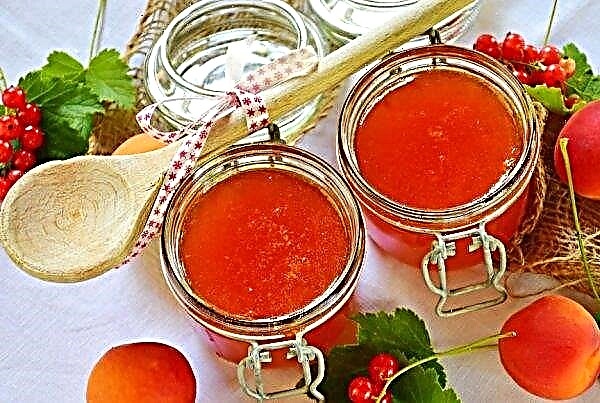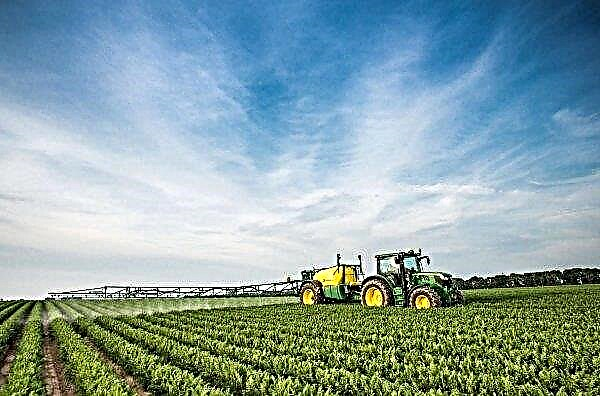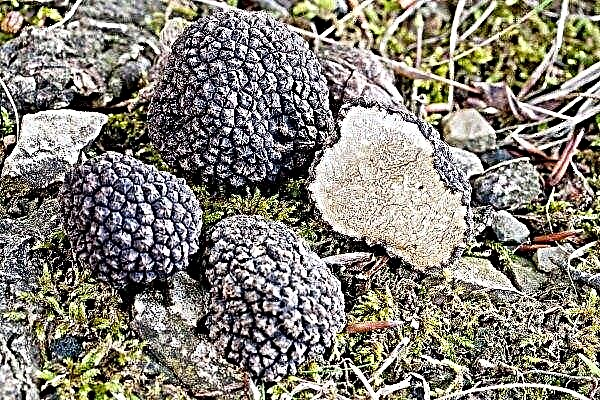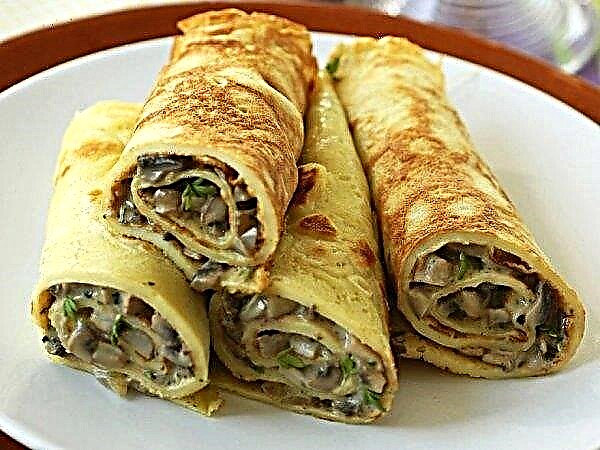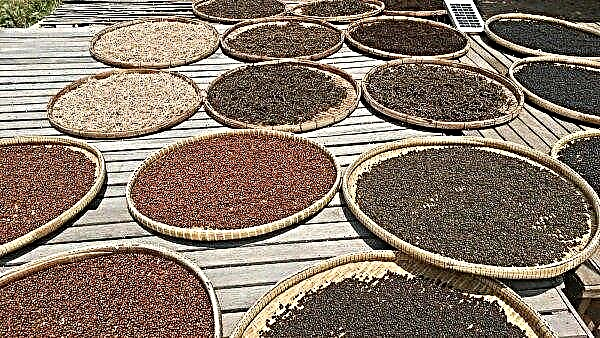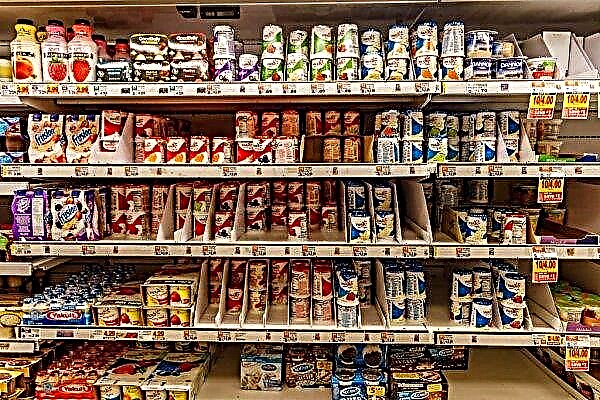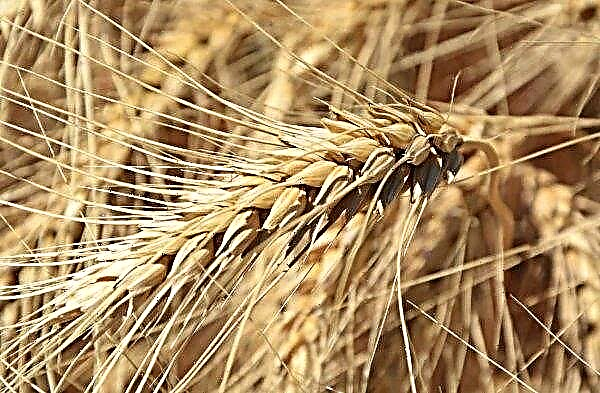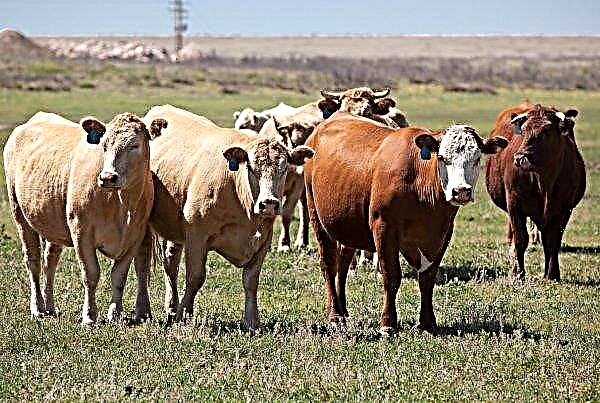Greenhouses of arched type made of polycarbonate today are in great demand among farmers and vegetable growers. Such constructions are ideally suited for the cultivation of various crops - vegetables, flowers, fruits and berries, as they are characterized by multifunctionality, versatility, durability and high resistance to climate conditions. Arched greenhouses are widely available for sale in specialized stores or construction markets, however, many summer residents prefer to make constructions with their own hands. How? Further in the article.
Advantages and disadvantages of an arched greenhouse
The arched type of greenhouses is one of the most popular and popular among summer residents. Such designs are excellent for both summer plant cultivation and year-round use. They are a device, the basis of which is a profile frame made of metal with transverse jumpers necessary to impart rigidity and strength to the structure. The greenhouse has a vault of garden arches, while the walls and the roof are a single whole.
- Among the main advantages of the described device can be noted:
- Availability and low cost. Affordable prices for an arched greenhouse, as well as the ability to make it yourself from improvised materials, make it available to a wide range of farmers. In addition, thanks to the use of polycarbonate, the financial costs of heating and foundation construction are significantly reduced.
- Reliability. Arch-shaped constructions have increased strength properties, excellent resistance to external factors, such as wind, rain, snow. When using high-quality coating material, such as polycarbonate, the device can last more than 10-15 years.
- Simplicity of manufacturing and installation. The arched structure is quite simple, and its installation does not require special skills or knowledge. With a minimum number of tools, you can completely assemble the device in just 1-2 days. In addition, the greenhouse can be mounted directly on the ground, on wooden beams or on a previously prepared foundation.
- Universality of application. Arched greenhouses are great for growing seasonal products, as well as for year-round activities for the cultivation of vegetables, fruits or flowers. In addition, such a design makes it possible to quickly change the size of the greenhouse area, due to the installation of additional elements.
- If we talk about the shortcomings of the arch-type greenhouse, then experienced summer residents agree that the main ones are:
- difficulty in organizing a high-quality and efficient ventilation system;
- limit in the choice of coating material. As a rule, structures in the form of an arch are designed only for polycarbonate or film. It is theoretically possible to use glass as a coating material, however, it is quite expensive and not technologically advanced;
- the design is not suitable for the cultivation of plants of indeterminate type, with unlimited growth of the central conductor. In such cases, vertical greenhouses will be the best option.
The first flaw is the most significant.

To cope with the organization of ventilation, experienced summer residents are advised to use one of the options described below:
- to ensure ventilation, use the front door to the greenhouse and the window, which is located on the side opposite the entrance;
- during the manufacture of the frame, make special ventilation transoms located on the sides and top;
- during the production of the carcass, make special sections in the coating, which, if necessary, could freely rise and fall along the guides.
Important! The latter ventilation option can only be implemented for polycarbonate greenhouses.
Arched greenhouse design specifications
The arched, or as it is also called, tunnel greenhouse is a fairly simple design, which allows you to save on coating materials during its construction, avoid the presence of a large number of joints and sharp corners, and greatly simplify the installation process. The described device has some important characteristics that must be considered when purchasing or self-manufacturing.
Dimensions
Of great importance when choosing and installing a greenhouse are its dimensions. Of course, the larger the design, the better, especially if vegetable growing is a business for a summer resident.
 A microclimate more comfortable for plants is formed in the overall greenhouse, there is much less risk of temperature changes, plants have more space for growth and do not touch the walls of the structure, which protects them from thermal burns
A microclimate more comfortable for plants is formed in the overall greenhouse, there is much less risk of temperature changes, plants have more space for growth and do not touch the walls of the structure, which protects them from thermal burns
As a rule, finished greenhouses from manufacturers have standard sizes: 3 × 4, 3 × 6 or 4 × 6. As mentioned above, arched devices have a significant drawback - the difficulty in providing a high-quality ventilation system. Farmers have to confine themselves only to holes made through the front doors or transom windows. For this reason, It is not practical to make a greenhouse longer than 6 m long, since it will not work to ventilate the structure in a quality manner.
As for the height of the greenhouse, it will largely depend on what types of plants will be cultivated. When growing undersized crops, for example, cabbage, the ceiling height from the wall can be limited to 30–60 cm. When cultivating tall plants or crops on shelves, the height of the structure can be increased to 1.5–2 m.
Important! It is impossible to design the dimensions of the arched greenhouse, based solely on the size of the land. It is necessary to take into account the main purpose of the building and correlate the dimensions with it.
Materials
As already noted, polycarbonate or film is used as a covering material for an arched greenhouse.
Polycarbonate is today considered the most advanced material intended for covering the greenhouse, as it has certain advantages that allow you to successfully grow vegetables and fruits all year round.

- Among the advantages of polycarbonate devices are:
- high protection of plants against ultraviolet radiation and sudden temperature changes. The material is able to withstand temperatures of –30 ... + 100 ° С, at the same time, it does not change its technical properties, is not deformed or damaged. It allows you to create a microclimate inside the greenhouse, as comfortable as possible for the development of vegetation;
- excellent durability. Such structures have increased strength properties, are able to last more than 15 years;
- good thermal insulation and light transmission - up to 85% of sunlight;
- convenience and ease of installation. Polycarbonate sheets are quite flexible, they bend well, take the necessary arched shape, which makes it possible to carry out installation of the structure in a short time;
- the ability to grow vegetables and fruits year-round with the availability of quality heating.
However, polycarbonate greenhouses are not without drawbacks, among which the most significant are considered high cost of material, in comparison with a film covering.
Important! Polycarbonate is not demanding in the care, with the appearance of dirt, you can simply wipe it with a damp cloth. However, categorically it is forbidden to use chlorine-containing agents, solvents and aldehydes for cleaning the material.
Film coating is a more economical option. Thanks to modern production technologies, the film has acquired good resistance to low temperature indicators, excellent elasticity and the ability to not pass moisture.
The structure of the material freely transmits oxygen, carbon dioxide, and is also 100% transparent to sunlight and ultraviolet radiation.
 When choosing an arched greenhouse, experts advise to give preference to the design of a special reinforced film, which is characterized by good strength, practicality, resistance to stretching and long life, about 3 years
When choosing an arched greenhouse, experts advise to give preference to the design of a special reinforced film, which is characterized by good strength, practicality, resistance to stretching and long life, about 3 years
Equipment
The design of the arch-type greenhouse is universal. It includes:
- arched framemade of: profile pipe fastened with special jumpers, metal wire with mesh or plastic pipe. There are also wooden frames, however, for their manufacture certain knowledge and skills are required;
- coating material, which can be used as a film or sheets of polycarbonate.
Industrial production devices can be equipped with various accessories and additional equipment: ventilation system, heating, irrigation system, etc. When the greenhouse is manufactured independently, the number and type of additional components will be determined by the functional purpose of the design, financial capabilities of the summer resident and his personal preferences.
Did you know? In Belgium, the city of Brussels, is a unique greenhouse-greenhouse, an area of 25,000 square meters. m, in which visitors are admitted only once a year - during the period of mass flowering of plants.
Build Features
Installation of an arched greenhouse is quite simple and does not cause any difficulties. But in some cases, inexperienced masters can face a number of problems:
- Location. Immediately before installing the device, you need to choose a suitable sunny, well-lit place that should be carefully leveled. Many summer residents often neglect this step, and it is completely in vain, since when installing the frame crookedly, it will be difficult to fix the polycarbonate sheets, since the inlets will be either very small or very large.
- Base. It is equally important to prepare a solid, reliable foundation for the frame. In rare cases, it is allowed to install the greenhouse directly on the ground, since the term of its operation with such use is significantly reduced. The simplest foundation is a foundation made of timber, which should be covered with a special tool for decay, cracking and mold.
- Arches. For the manufacture of arcs, various materials are used: plastic, aluminum, building wire, profile pipes. The latter option is considered one of the most durable, but often, with the bending of arches “in the knee” some difficulties arise. In order to bend the arches, experienced craftsmen use an acetylene torch, a propane cutter or special pipe benders. If you have financial capabilities, it is recommended to purchase a machine with an electric drive, which allows you to make structures of any shape.
- Coating installation. It should be noted that sheets of polycarbonate must be laid with an overlap of 2-3 cm, and all seams must be carefully treated with sealant. The ends of the strips must be covered with metallic tape, and the strips should be fixed to the frame using self-tapping screws. When using a film coating, it is fixed with special clips with rubber gaskets. As an analogue, a wooden rail can be used, which is wrapped with a film and fixed to the frame.
Video: DIY arched greenhouse construction
Buying Criteria
Nowadays, with the wide assortment available, there is nothing easier than acquiring an arched greenhouse in a building market without spending a lot of time, money and effort on independently making it from improvised materials. However, the variety of greenhouse models presented in stores from different manufacturers makes the choice of a suitable option quite difficult.
Important! In order for the arched structure to serve for a long time, while maintaining a comfortable microclimate inside, it is necessary to seal all seams with glue bases.
Therefore, before buying, experts advise you to pay attention to the following factors:
- Dimensions. Manufacturers offer devices of standard and custom sizes. The second ones are much more expensive, because they are made according to individual sketches, but they allow you to use the available space much more efficiently. When choosing a standard design, the optimal sizes are: 3 × 4, 3 × 6. The most popular greenhouses, up to 6 m long, longer require additional partitions to organize quality plant care.
- Frame. To make the frame, manufacturers use wood, aluminum, plastic, galvanized metal, steel pipes. The first option is considered the least suitable, because when exposed to external factors, it quickly loses its properties and deteriorates. The aluminum frame, as well as galvanized steel, has excellent strength, durability, but it will be quite expensive. The best option is a construction of steel pipes, which is quickly assembled, characterized by excellent indicators of stability and strength.
- Coating material. As already noted, PVC film, polycarbonate, glass are used to cover the greenhouse. A significant disadvantage of a glass coating is its fragility and a rather large mass. In addition, glass is used only for greenhouses with a strong and solid foundation. The film is usually used for small structures. It is inexpensive, creates a good greenhouse effect, but has a short life and deteriorates quickly under the influence of external factors. The best option is a polycarbonate coating. It is lightweight, easy to install, durable, flexible, protects the vegetation from ultraviolet radiation, resistant to negative climatic phenomena.
- Optional equipment. If you want to grow vegetables or flowers year-round, when choosing a greenhouse, you need to pay attention to the presence of heating, as well as good ventilation. The heating system is selected depending on financial capabilities. To ensure ventilation in the described devices must be provided windows-transoms or vents.

What can be grown in such a greenhouse?
Arched greenhouses are the best option for seasonal or year-round cultivation of vegetables and flowers. However, in order to engage in vegetable growing throughout the day, a heating, ventilation and lighting system should be organized in the greenhouse.
Did you know? The first modern greenhouse was erected in Germany in the 13th century. The Winter Garden was located in the room, where the reception of King William of Holland took place. Greenhouses appeared on the territory of the Russian Federation during the time of Peter I.
Due to its heat-saving properties, the polycarbonate greenhouse allows you to grow a wide variety of vegetables - tomatoes, cucumbers, peppers, carrots, beets, etc. All year round you can cultivate green onions, but in the winter, you will need to take care of the organization of additional lighting. The described design is ideal for growing champignons, for which additional lighting is not required, but it is necessary to maintain a comfortable level of humidity and temperature.

In addition to vegetable crops, peculiar arched houses are suitable for planting various flowers: lilies, roses, chrysanthemums, tulips, etc. Growing flowers is a rather time-consuming process, but with due diligence, the result can exceed all the wildest expectations.
Polycarbonate arched greenhouses are a profitable, economical and simple solution for the successful cultivation of various vegetable crops, fruits and flowers throughout the year. Despite the fact that such constructions appeared only 10–15 years ago, today they are in great demand and are widely used both in private household plots and in large greenhouse farms.Important! When growing vegetables in a greenhouse, it is necessary to take into account the compatibility of vegetables with each other.

